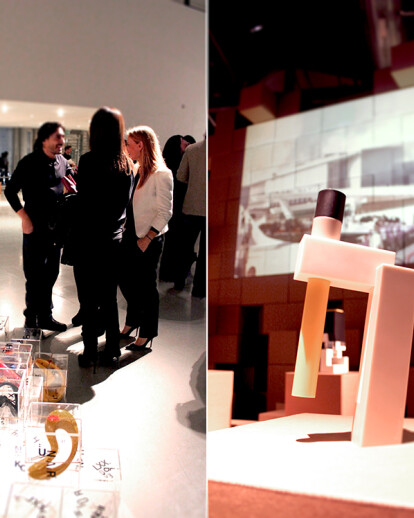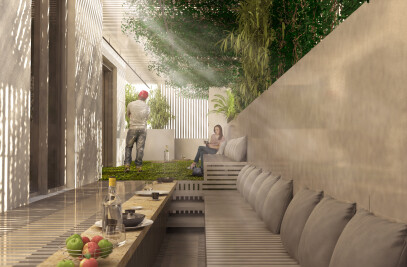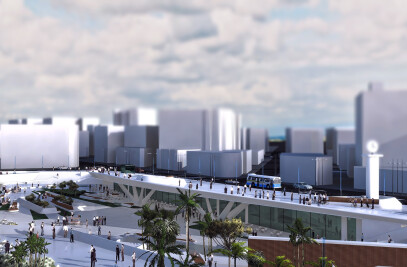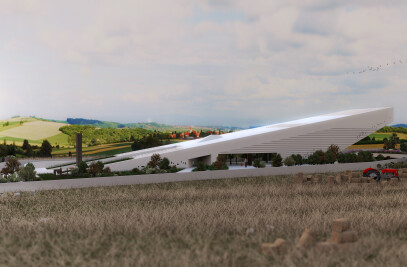“Could we describe Architecture as political art?
The interaction of Architecture with public space potentially gives it such a role. Especially throughout the 20th century and until the present day, one could say that Architecture prevailed over all other arts in its ability to activate and sensitise the public sentiment, to awaken passions and sow discord. Above all, however, particularly through its decisive intervention in the public space, Architecture has a substantial role in shaping the socio-political and economic environment. In fact, quite often it acquires a crucial symbolic role in such an environment.
Not only did the architects not refuse this symbolic role of architecture but rather they reinforced it. Deyan Sudjic characteristically says: “[The architects] have consistently presented their work as at least a ticket to an architectural utopia, if not actually a weapon in the class struggle.”
This position inevitably leads us to the beginnings of the modernist movement, to the transition from the 19th to the 20th century, to the aesthetics of the machine, to the irreversible transformation of the world that was brought about by the industrial revolution. The rapid development of technology has a definitive effect on human civilisation. At the dawn of the 20th century, the supporters of the avant-garde movement denounced the old world and the branded design as elitist and egocentric. For them the “old” expressed urban, subjective visions and approaches that led to the corruption of society. The constructivist, futuristic and neoplatonic vision presupposed an anonymous and detached future, inspired by the machine, functional, minimalist, consistent and rational. Artists-creators, such as El Lissitzky, Aleksandr Rodchenko, Herbert Bayer and Laszlό Moholy- Nagy envisioned an objective and universal world, in which the artist has a substantial social and consequently a political responsibility. Through Bauhaus, concepts like truth and purity of form and content, objective neutrality, but also the detachment from historicity that led to a global and absolute character, replaced artistic sentimentalism, subjective approach, local association and personal involvement.
Inevitably, of course, the idealism of modern utopia, and mainly its architectural model, received major blows from the countless heterotopias and dystopias of post-modernism in the second half of the 20th century. The global and the uniform were replaced by the local and the singular, manifested in endless combinations and variations.
And yet, one wonders, whether through the failure of modernism the definitive end of utopia has really come.
One could say that the last decades have shown strong similarities with the avant-garde of the early 20th century: technology, more than ever, plays a fundamental role in shaping our culture and indeed with such a frantic pace that we often have difficulty following the rapid developments. On the other hand, as a reflection of the two major world wars of last century, the terrorist attacks on the Twin Towers in New York, on 11 September 2001, triggered the enforcement of a new world order, something that continues to evolve to this day.
Both modern technology and the new global socio-economic order have created a new international arena for art, architecture and design. Nowadays, the search for universal and absolute purity and unity of the modernists has been replaced by a new model, which is characterised by the mobility of artists internationally, as well as the interaction of science, individuals, countries and cultures. This interaction creates a new hybrid universality in a globalised grid. The creators of today, with a critical position and stance, have developed a strong sense of their social responsibility and, by extension, their political role.
Through a “rhizome” development (to use the term of Deleuze and Guattari) – horizontal and multi-layered and without a spatial orientation or direction – one would think that a new avant-garde is being established in order to renegotiate the current order of things.
With the above theoretical framework in mind, one could look at the work of Constantinos Kalisperas. A “constructivist”’ – as he admits – in his childhood, he secretly gathered wood at night from a building site (the Palace Cinema- Theatre in Limassol), which he stacked in his grandmother’s yard, where he used to make with a friend improvised flying machines, “wooden airplanes”, such as were perceived by his childish creativity and imagination. The sensation of flying and the weightlessness was, as he says, something in which he was particularly interested, mainly while he was studying at AA, the renowned Architectural Association School of Architecture in London, which was founded in 1847, and has since been one of the most important incubators of the most advanced architectural thought internationally. “What I draw is contrary to the laws of gravity, which are social laws, too. Technocratic ideologies that keep riveted tothe ground. As a creator, I seek freedom.”
The architectural pursuits of Constantinos Kalisperas embody this constant search for freedom, designing against gravity and in opposition to the existing social structures and hierarchies. Consequently, they are expected to be in principle unconventional and accordingly small in number, although he is the son of a well-known and successful architect.
Furthermore, one could even say that Kalisperas’ approach, either in architecture or in design, involves the fundamental principle of coincidentia oppositorum, i.e. seeking unity through the coincidence of opposites: above with below, inside with outside, negative with positive, infinite with finite, a principle that has defined both western and eastern way of thinking since antiquity. On the other hand, however, one can clearly sense the need for the deconstruction of this unity, where the organised structure and balance are disrupted and fragmented, thus creating dozens of possibilities – vague, complex, random and definitely open to multiple interpretations.
His thesis at the Architectural Association School of Architecture dealt with the remodelling of the Nicosia Buffer Zone in the Ledra Palace area. It was named B.O.W. after “Boundaries of War”. In English, however, the word “bow” has various meanings, involving architectural, martial or social connotations: as a noun, “bow” means, among other things, a geometrical curve or a weapon of war and, as a verb, it can mean “bending forward to show respect or yielding”, “to withdraw” and “to submit”. The role of architecture in the transformation of dystopias into utopias is profoundly a political one. Especially, in controversial and disputed areas, in “non-places”, such as the Buffer Zone in Nicosia, architectural suggestionsinterventions could play a crucial, definitive and catalytic role in the formation of a new socio-political environment.
In this light, one could examine the objects designed by Kalisperas. Like exercises in space – on a small scale – where utopias ostracise everyday dystopias, where reality can teeter and balance defying gravity, re-establishing and redefining itself. For Kalisperas, these objects have the capacity “to reinvent and to reactivate the context of their existence” every time the viewer approaches them. According to the artist “they wish to fly, not to be riveted to the ground.”
These works have a clear visual and conceptual substance without, however, evading their functional use. “BIG OMM” is a front door handle (the only one of Kalisperas’ many designs that has been created in numbered series), which alludes to the Hindu religion, where OM represents as a form the divine mystical sound – the ultimate reality without beginning or end. The remaining objects have, inter alia, titles, such as “Liquid Solid”, “Towers of Hope”, “Last Hope”, “Fragments of Hope”, and “Almost Perfect”. Titles, which verify the search for an imaginary future, of the alchemists’ coniunctio oppositorum – the perfect and harmonious union of opposites.
The influence of artist Nikos Kouroussis, Kalisperas’ mentor since his adolescence, has been essential to the evolution of his work. They both still interact intellectually and artistically on a continuous basis. The latest example of their creative coexistence is “Ipervasi” (Transcendence), an artwork which was commissioned by the Nicosia Municipal Arts Centre, in cooperation with the Pierides Foundation, for the exhibition Terra Mediterranea – In Crisis, and which, being embedded in the facade of the Old Powerhouse building, seems that it too defies the laws of gravity.
Heterogeneous materials, hard and soft, natural and synthetic like resin, corian, iron, perspex, aluminum and brass, are the raw materials which Kalisperas uses for the objects that he designs and creates. Their sculpture (and micro-sculpture) quality creates strange artistic complexes, with a rhythmic arrangement but also with “escaping tendencies” – real or allegorical. On the one hand, their bases have perfect geometric shapes and volumes: the circle, the square, the cylinder, the cube. On the other, a sudden section, an unexpected displacement of the axis of balance gives them an impetus and makes them get off the ground. This is achieved by the parallel co-existence of technology (the engine) and man (the hand). The fragile relationship between technological perfection and human nature creates these unique peculiar hybrids that float between sculpture and architecture, between form and concept, between the erotic and the rational, between the artistic and the socio-political, between the material and the immaterial.
They are, in fact, small three-dimensional utopias, for models of worlds that will come to replace the worlds that are leaving...”
Dr. Yiannis Toumazis Assistant Professor, School of Architecture, Fine and Applied Arts, Frederick University

































